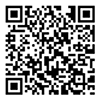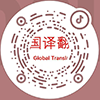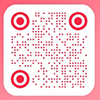Specific Solutions
Drug Package Insert Translation: A Key Step in Ensuring Global Patient Safety
With the increasing globalization of today’s world, the circulation of pharmaceutical products across countries has become a norm. The drug package insert, as an essential document for pharmaceuticals, provides detailed instructions on the usage, dosage, contraindications, and precautions of a drug, directly impacting the health and safety of patients. As drugs circulate in the global market, the translation of drug package inserts has become crucial. High-quality translation ensures that the drug is used correctly, preventing misuse and adverse reactions. So, what are the challenges and importance of drug package insert translation? How can we ensure translation quality? This article will explore these aspects.
The Importance of Drug Package Insert Translation
A drug package insert is not just a guideline for the use of the drug; it is also responsible for ensuring patient safety. As pharmaceutical products are sold internationally, the drug insert must meet the language requirements of various countries and regions to ensure that patients can understand the drug information accurately. Different countries have different cultural backgrounds, language habits, and understandings of health, which makes it crucial to translate drug inserts clearly and accurately to avoid misunderstandings and potential health risks caused by language barriers.
The quality of drug package insert translation directly impacts the safe use of the drug. For example, inaccurate translation may lead to patients taking the wrong dosage, overlooking contraindications, or ignoring possible side effects, all of which could result in serious consequences. Therefore, ensuring the accuracy and precision of drug insert translations is vital.
Challenges in Drug Package Insert Translation
Translating a drug package insert is different from everyday translation and requires a high level of professionalism and attention to detail. Below are some common challenges:
1. Accurate Translation of Specialized Terminology
Drug package inserts contain a significant amount of specialized medical terminology, such as drug components, dosage, contraindications, and drug interactions. These terms may not have direct equivalents in different languages, and extreme caution is needed to ensure the most precise and medically appropriate expressions are used. For example, some drug names in English might be translated differently in various countries, and there may not be a direct equivalent in Chinese. Translators need to understand medical knowledge thoroughly and be able to make the most appropriate translation.
2. Legal and Cultural Differences
The translation of drug inserts also needs to account for legal and cultural differences between countries. For example, some drugs may be banned in certain countries while being legal in others. When translating, the translator must understand the pharmaceutical regulations in different regions to ensure that the translation complies with local laws. Additionally, there are different health perceptions and cultural nuances in various regions, so the translation must be culturally sensitive to prevent misunderstandings or unnecessary controversy.
3. Precisely Conveying Drug Usage Information
Drug package inserts must accurately communicate critical information, such as dosage, frequency of use, precautions, contraindications, and potential side effects. Incorrect translations may lead to misuse of the drug, affecting treatment efficacy or even causing adverse reactions. Therefore, when translating drug inserts, translators must ensure the integrity and accuracy of the information, avoiding any simplifications or omissions of key content.
How to Achieve High-Quality Drug Package Insert Translation
To ensure high-quality drug package insert translations, here are several key recommendations:
1. A Solid Background in Medical Knowledge
Translating drug package inserts requires translators not only to be proficient in the target language but also to have a solid understanding of medical terminology. Only by understanding the drug’s components, functions, side effects, and other key details can a translator accurately convey this information to patients in the target language. Medical knowledge is essential for the translation of drug package inserts, so translators must be familiar with medical terms, drug categories, and related treatment methods.
2. Precise Terminology Selection
The choice of terminology is crucial when translating drug inserts. To ensure accuracy, translators should select terms that meet the medical standards of the target language, following conventions in the medical field. When encountering uncommon terms, translators can consult specialized medical dictionaries or engage with industry experts to ensure precise terminology.
3. Pay Attention to Legal and Cultural Factors
When translating drug package inserts, translators need to understand the legal requirements and cultural norms of the target region. Different countries may have different regulations regarding drugs, so translators should be aware of local pharmaceutical laws to ensure compliance. Additionally, cultural differences in health perceptions and expression should be considered to prevent potential misunderstandings or controversies.
4. Strict Quality Control
The translation of drug package inserts is not just about language conversion; it requires strict quality control processes. High-quality translation should go through multiple rounds of proofreading and editing to ensure that the translation is accurate. Translators and editors must work together to ensure that the translated content meets the needs of pharmaceutical manufacturers, regulatory agencies, and patients.
Conclusion
The translation of drug package inserts is not only related to the legal distribution of drugs but also directly impacts patient health and safety. Accurate and professional translation is a crucial step in ensuring the safe use of drugs and promoting global patient health. With the increase in the globalization and circulation of pharmaceutical products, the translation of drug package inserts will become even more important. To ensure translation quality, drug package insert translation requires a high level of professionalism, meticulousness, and awareness of legal and cultural differences. Only then can we ensure that drugs are used correctly, avoiding misuse and potential health risks.


















